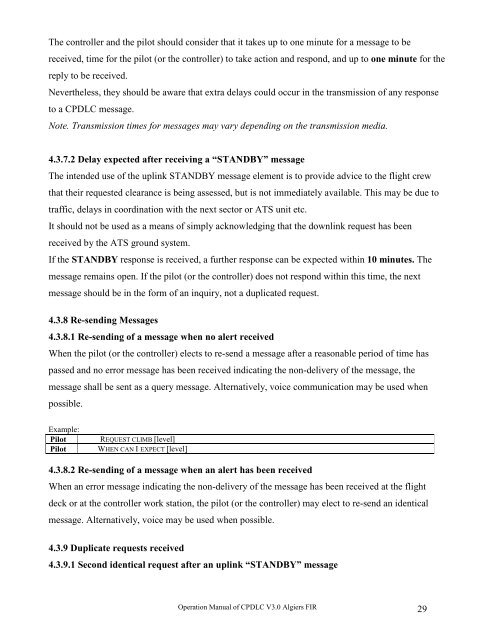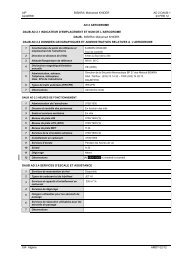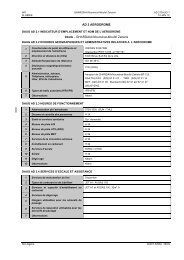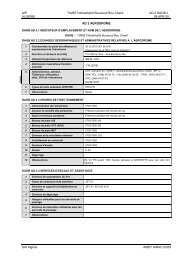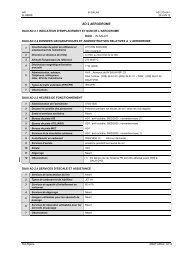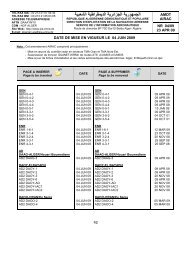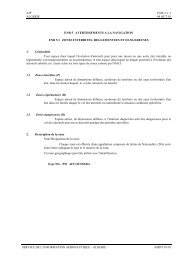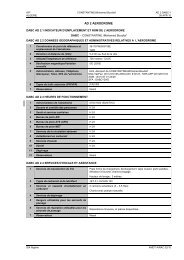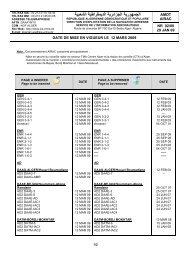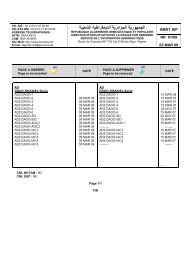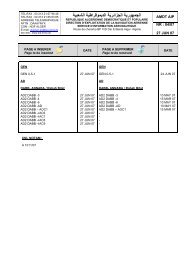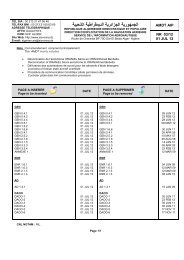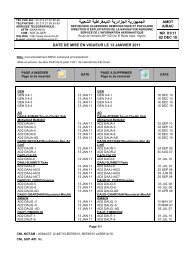Manuel CPDLC V3.0. - Service d'Information Aéronautique Enna
Manuel CPDLC V3.0. - Service d'Information Aéronautique Enna
Manuel CPDLC V3.0. - Service d'Information Aéronautique Enna
You also want an ePaper? Increase the reach of your titles
YUMPU automatically turns print PDFs into web optimized ePapers that Google loves.
The controller and the pilot should consider that it takes up to one minute for a message to be<br />
received, time for the pilot (or the controller) to take action and respond, and up to one minute for the<br />
reply to be received.<br />
Nevertheless, they should be aware that extra delays could occur in the transmission of any response<br />
to a <strong>CPDLC</strong> message.<br />
Note. Transmission times for messages may vary depending on the transmission media.<br />
4.3.7.2 Delay expected after receiving a “STANDBY” message<br />
The intended use of the uplink STANDBY message element is to provide advice to the flight crew<br />
that their requested clearance is being assessed, but is not immediately available. This may be due to<br />
traffic, delays in coordination with the next sector or ATS unit etc.<br />
It should not be used as a means of simply acknowledging that the downlink request has been<br />
received by the ATS ground system.<br />
If the STANDBY response is received, a further response can be expected within 10 minutes. The<br />
message remains open. If the pilot (or the controller) does not respond within this time, the next<br />
message should be in the form of an inquiry, not a duplicated request.<br />
4.3.8 Re-sending Messages<br />
4.3.8.1 Re-sending of a message when no alert received<br />
When the pilot (or the controller) elects to re-send a message after a reasonable period of time has<br />
passed and no error message has been received indicating the non-delivery of the message, the<br />
message shall be sent as a query message. Alternatively, voice communication may be used when<br />
possible.<br />
Example:<br />
Pilot REQUEST CLIMB [level]<br />
Pilot WHEN CAN I EXPECT [level]<br />
4.3.8.2 Re-sending of a message when an alert has been received<br />
When an error message indicating the non-delivery of the message has been received at the flight<br />
deck or at the controller work station, the pilot (or the controller) may elect to re-send an identical<br />
message. Alternatively, voice may be used when possible.<br />
4.3.9 Duplicate requests received<br />
4.3.9.1 Second identical request after an uplink “STANDBY” message<br />
Operation Manual of <strong>CPDLC</strong> V3.0 Algiers FIR 29


